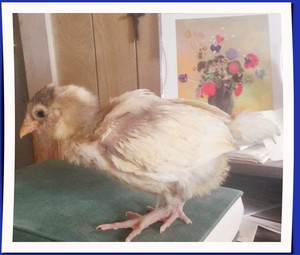24 Apr Sun 2016
How chickens digest their feed
How chickens digest their food.... Glucose is burned in the cells for heat and energy production, the end products being heat or energy, carbon dioxide, and water (Fig. 118). The process may be represented by means of a chemical equation, thus: chemically C6H1206 + 602 = A + 6C02 + 6H20 aka Glucose Oxygen Heat Carbon Water or dioxide energy
An excess of digested carbohydrates, over and above that stored as glycogen, is transformed into body and egg fat.
Fats are gradually removed from the blood stream and stored as adipose tissue mainly, under the skin in the abdominal region, along the intestines, and in the egg. They serve as a reserve supply of heat and energy. In case of inadequate food supply, as soon as the glycogen is used up, the fats are burned with the same end products as formed by the burning of carbohydrates.
As long as fats are present, the proteins are protected from consumption. Amino acids, absorbed into the blood stream, are used to build new body tissues, rebuild worn-out tissue, and to form the white and much of the yolk of eggs. Excess amino acids may be used for heat and energy purposes or transformed into fats as well.
Undigestible food (i.e. fiber), intestinal bacteria, digestive juices, bile, worn-out intestinal lining tissue, and mineral material resulting from body metabolism end up as fecal matter. Some of the unabsorbed and undigested contents of the small intestine back up into the ceca. A little absorption may take place there as well .
The ceca contracts and forces the material out into the large intestine about once a day.
As the undigested food passes along through the large intestine, some of the water is reabsorbed into the body circulation.
The undigested material is voided from the large intestine into the cloaca and from it to the outside of the body as feces. The mixture of feces and urine voided by birds is known as manure and it contains about 1.44 per cent nitrogen, .99 per cent phosphoric acid, and .39 per cent potash.
A hen will produce about forty-three pounds of manure a year. It is of considerable importance as a fertilizer and can be aged in a compost pile for use in the garden or as a soil amendment.
The urine, OTOH, consists mainly of nitrogenous waste products and water resulting from body metabolism processes.
Liquid waste products pass out of the blood stream into the kidney tubules as the blood passes through the capillaries of the kidneys. The material passes from the kidney through the ureters to the cloaca, where it is excreted as urine. As the liquid urine passes along through the ureters, in the region of the large intestine, much of the water in it is reabsorbed into the body circulation. The urine is generally a white pasty material which is mixed with, and coats, the droppings.

